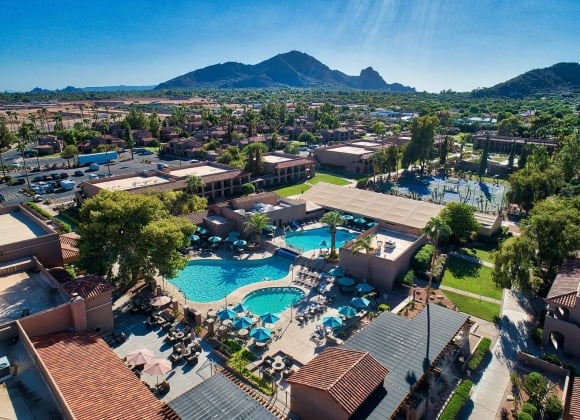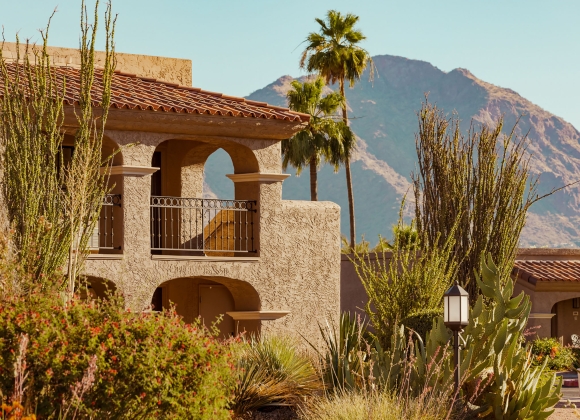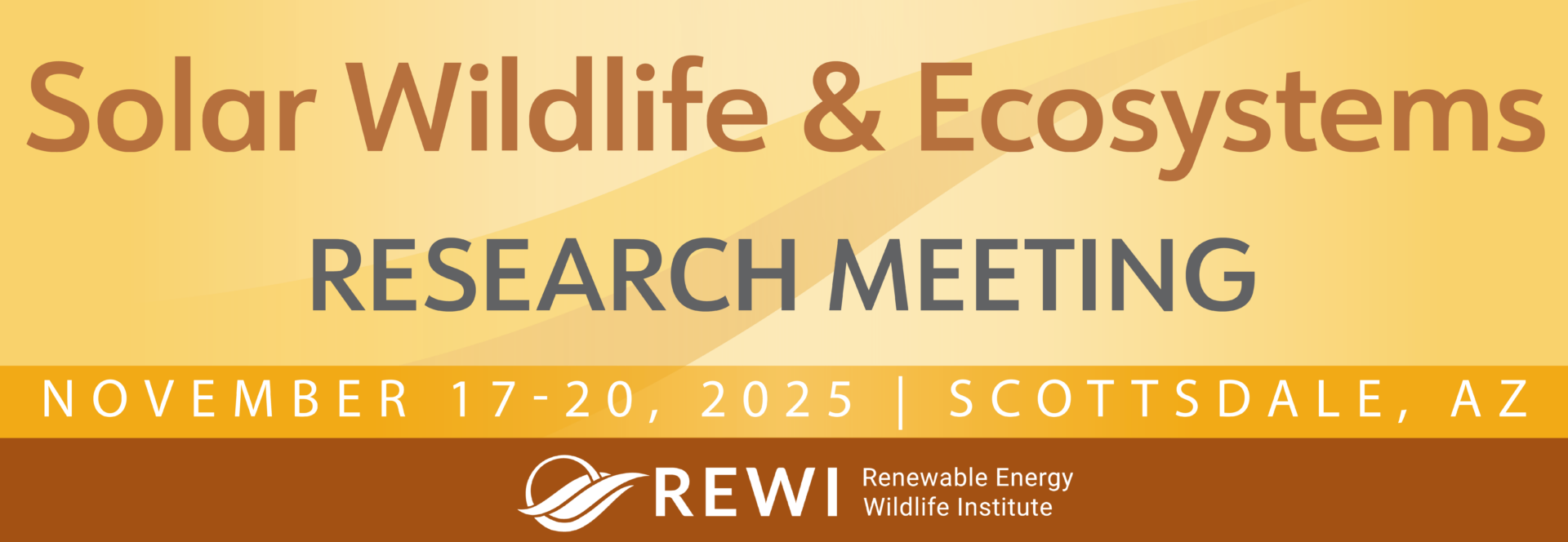The 2025 Solar Wildlife & Ecosystems Research Meeting will take place at the Scottsdale Plaza Resort & Villas in Scottsdale, Arizona
Rooms in the 2025 room block are available through October 27, 2025 or until fully booked. A portion of the room block is available at the prevailing government per diem rate.
Booking
Click here to access the 2025 Meeting room block. Regular room rates for SWERM attendees are $169 USD per night.
Booking Deadline: Rooms are available on a first come, first served basis through October 27, 2025 or until fully booked.
Government Per Diem
A portion of the room block is available at the prevailing government per diem rate. Please reach out to Bryan Owens (bowens@scottsdaleplaza.com |480-951-5167) to book at the government rate directly, or after booking online to adjust the rate accordingly.

About the Venue & Scottsdale
Overseen by Mummy Mountain’s purple peaks—and surrounded by the splendor of the Sonoran Desert—the sprawling Scottsdale Plaza Resort & Villas is the laid-back Arizona resort to gather, commune, relax, and get happy. Scottsdale Plaza is a gateway to an exciting variety of things to do in Scottsdale. Located just minutes away from the restaurants, shops, and art galleries of Old Town Scottsdale; the world-class golf courses at McCormick Ranch; and the sights at Salt River Fields — the spring training home of the Arizona Diamondbacks and Colorado Rockies. Whether you want to hike Camelback Mountain, explore the distilleries of Cave Creek, or relax in a nearby park, we have tons of attractions within easy reach.
With its convenient location only 20 minutes from Phoenix Sky Harbor International Airport (PHX), getting here is a breeze.

Region at a Glance
Photovoltaic (PV) solar is experiencing unprecedented growth across the U.S. While the 2025 Solar Wildlife & Ecosystems Research Meeting (SWERM) will showcase research from all regions of the U.S. (and beyond), the Desert Southwest region of the United States, in particular, is seeing rapid growth of utility-scale solar energy development – and with it, rapid growth of research. Arizona ranks fourth in the nation for total installed solar capacity, with over 9,700MW of residential and utility-scale solar installed across the state. Neighbor California tops the list with over 51,000 installed MW, and Nevada is also in the top ten (6th, 7,900+ MW). This prevalence of utility-scale solar sites has created ample opportunity for research on the interactions between PV solar, wildlife, and ecosystems – over 60% of the data analyzed in REWI’s summary of Solar Energy Interactions with Wildlife and Their Habitats came from the Desert Southwest, specifically U.S. Fish & Wildlife Service (USFWS) Regions 8 and 2, and the U.S. Geological Survey (USGS) has also noted this trend. REWI has a history of collaboration with researchers in Arizona (check out last year’s crustivoltaics webinar with Arizona State University) and looks forward to building further connections at this year’s SWERM. Topics and content for the 2025 SWERM are intended to cover a wide variety of solar-biodiversity research and are not limited to the Desert Southwest region – for more information on specific areas of interest please view the Research Topics listed on the meeting webpage.
For information about attractions, restaurants, or other aspects of Scottsdale, view recommendations from The Scottsdale Plaza Resort & Villas:
Sponsor the 2025 Solar Wildlife & Ecosystems Research Meeting
View the Sponsor Page for 2025 levels and benefits
